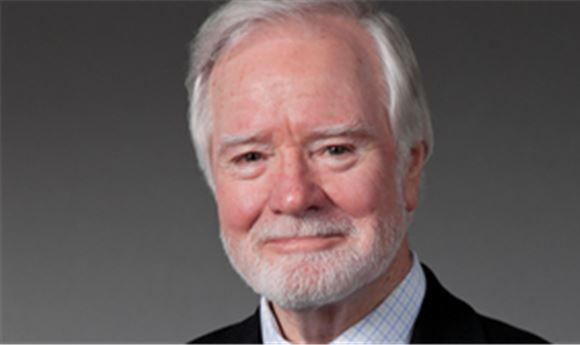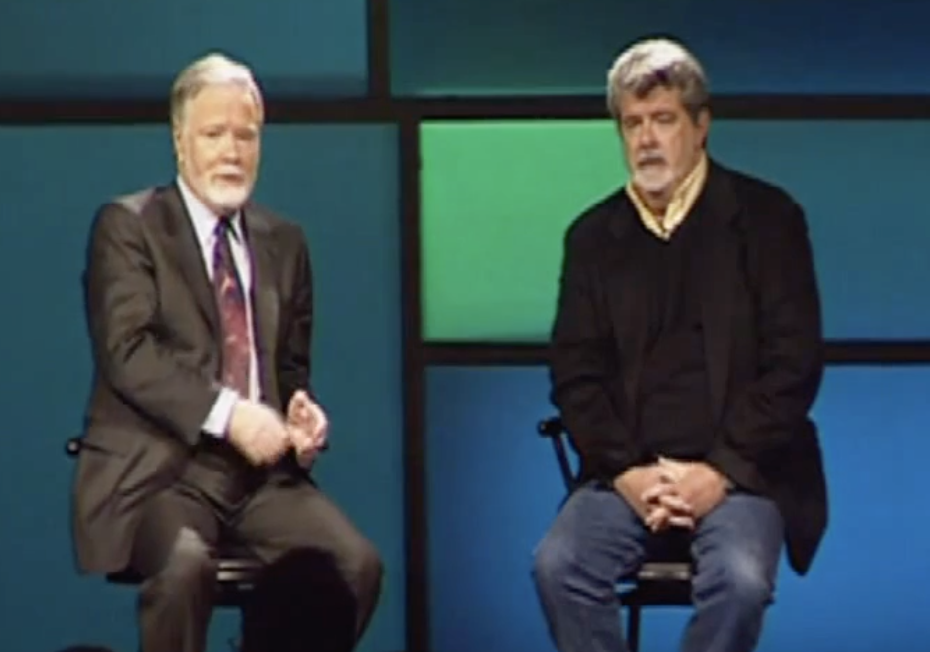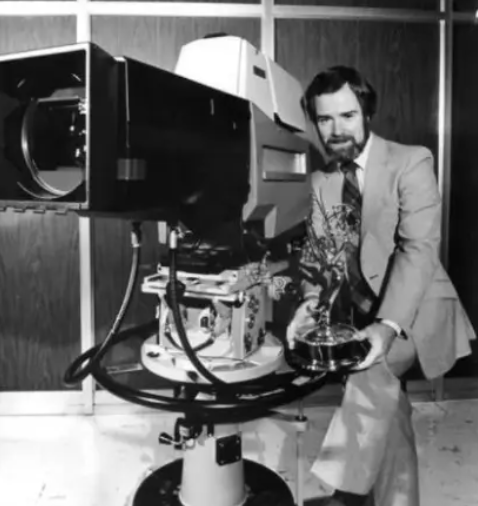SVG Sit-Down: Larry Thorpe Reflects on 50+ Years of Innovation, Leadership at BBC, RCA, Sony, and Canon
He was in on developments from automated studio cameras to HD
Story Highlights
When the Sports Broadcasting Hall of Fame held the election for its first class, in 2007, it was no surprise that Larry Thorpe, then with Sony, was elected alongside the likes of Roone Arledge, Howard Cosell, Jules Barnathan, and Jim McKay. Without Thorpe’s work at the BBC, RCA, Sony, and then Canon, the live-TV-production and digital-cinema universe would look very different. Having retired last month, he sat down with SVG’s Ken Kerschbaumer to discuss his career, highlights, and advice for anyone looking to make the right career moves.

Larry Thorpe recalls that a senior engineer told him, “You’re going to have to do many things but become an expert in one. And I remember really liking that idea.”
Looking back on your career, does anything pop out at you now that you’re taking a step away?
Oh, yeah. I’ve had four careers. I started with BBC, then RCA, then Sony, and then Canon. And each had the highlights in terms of exciting moments in both the broadcast world and the cinematography world.
At Canon, the highlight was, I was always interested in optics, but I was always involved with cameras. I never had time to dig deep into optics. And, when I joined Canon, I was able to do that and really loved it.
I also was working on the broadcast lenses and never expected that we would enter the digital-cinema world, but we did. And that, of course, brought me back to my old love for cameras. The last few years with cinema EOS and some of the remarkable products that Canon has brought out on both the lens and the camera side, that has been a real high. And, honestly, it’s a hard time to leave, because right now it’s very exciting.
What drew you to the business?
I went to college in Dublin, Ireland, College of Technology for electrical engineering, or electronic engineering as we like to call it. In my final year, I scooted over to the UK for some interviews as, at that time, there wasn’t too much in Ireland. One of the interviews was the BBC, and I liked what they said, and I said, yes. So, two weeks after I graduated, I flew to London, joined the BBC. And that started me into the broadcast world, which I never really left.
Did you know where you wanted to go with your career or have a master plan?
The master plan was that I’d be a design engineer. And, at the BBC, I went into what they call the designs department, where we design studio equipment. That’s where I learned to be a designer.
Then I met my wife in London, and, after a couple of years, we said, why not at an adventure? We were going to go to Australia because you used to have free passage back then. But RCA came through London on a recruiting campaign, and I went for the interview and liked very much what they were saying. So, next thing we knew, we flew to America, planning to stay for a couple of years, in 1966, and we’re still here. That’s when I got into camera design.
Watching from afar, I have always been fascinated that you truly love to learn about new things, like going to Canon. What drove your constant enthusiasm for learning, knowledge, and innovation?
I think it was back at college. We had a visiting senior engineer come to speak to us students about the world of engineering. I remember he said you’re going to have to do many things but become an expert in one. And I remember really liking that idea.
When I went to the BBC, I got into developing distribution amplifiers and decided to become an expert at negative-feedback amplifier design. I put a lot of effort into that, and that paid big dividends when I went to RCA and was doing the amplifiers for our cameras.
At each stage, I would try to become an expert. When CCD came along, I jumped on that and worked very closely with the experts in Japan to put out a lot of papers. At each phase, I chose something to try to become expert in while I tried to learn about other things. I think that helped to keep a focus.
Over the years, you were involved with many innovations. What were some of your favorites?
At RCA, it was the first three-tube camera and the TK-44, which took off like a rocket in the ’60s. Then, my last four years at RCA, I was made the unit manager — the leader, as they call it — of the development of the first automated studio camera. And that’s when microprocessors were just beginning to appear and software was beginning to become a word. We did develop a remarkable camera that was certainly the highlight of my RCA years: the TK-47 studio camera.
At Sony, one of the highlights was that I was the one that persuaded them to enter the studio-camera business, something they had no intention of doing. I made a very strong case to a huge group in Japan that the time was right. They had the right technology, and there was BVP360 and then later things like Digital Betacam.
That’s where we got a foothold with people like George Lucas, who were sort of wondering what was this digital-camcorder stuff. They played with it and said, You know, if you could raise the resolution and make a 24-frame-per-second version, this could be a movie-making camera.

Larry Thorpe worked closely with George Lucas and other filmmakers to grow the digital-cinema market.
Then along came the high-definition camcorder, and I was sucked into digital-cinematography development. That was very exciting because Hollywood was sort of rejecting us and saying, No, no, no, no, we love film. But James Cameron, George Lucas, and Francis Coppola were interested in HD, and they all played with it. They all said, Yes, we can work with you if you keep developing it. And then it took off.
Where do you think the industry is with respect to imaging technology?
I think imaging is becoming very adventuresome, and the sports world is a great example. There was a time when sports production was slave to 2/3-in. cameras and 2/3-in. lenses, and for good reasons as they could use big, long lenses.
But, with the arrival of all these other tools, they’re seeing novel applications that are not displacing the traditional shooting but augmenting it. You get these lovely scenes, and the broadcasters love it. I just see that growing and growing, and how can we enhance VR, AR, and things like volumetric imaging? It’s going to be fun.
Let’s get back to becoming an expert in one thing. Many people think that it is a risk to take on becoming an expert in something new. What’s your advice to people who are thinking about joining a new company with a new technology that they may not be familiar with? How can they feel comfortable doing that?
Obviously, the first thing is, they’d be reporting to somebody who’s an expert and that person hopefully would become a mentor and grow them into whatever that new technology is. But then, there’s a lot you can do on your own, and today the access to knowledge is there. You can just Google and find an awful lot of stuff like examples of HDR, wide color gamut, all that stuff. And there are just voluminous amounts of information out there on that.
And then, someone should get involved in a standardization body, like SMPTE. I did that for more than 20 years through the HDTV development, and that grows you enormously because you’re working with competitors [and] with users in broadcasting and cinema.
You can be in some very fierce debates in those working groups, but you learn a lot, and you become wise in how to absorb information, how to present your case against competing cases. I found that tremendously useful, and it’s something I’d recommend to all young people.
To learn more about Thorpe’s illustrious career, click here to watch his 2007 Sports Broadcasting Hall of Fame induction video.

